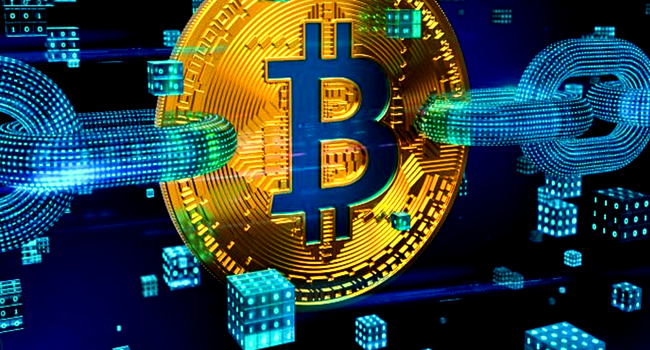Introduction
Blockchain generation, regularly associated with the upward thrust of cryptocurrencies, is a modern development that has far-reaching implications beyond virtual currencies. At its core, blockchain presents a decentralized, transparent, and stable method of recording transactions and coping with statistics. Since its inception with Bitcoin in 2009, blockchain has garnered extensive interest and adoption throughout numerous industries. This article explores the intricacies of blockchain technology, its standards, applications, challenges, and potential future impacts, emphasizing its essential function in the cryptocurrency surroundings.
1.UnderstandingBlockchain Technology
What is Blockchain?
Blockchain is a kind of distributed ledger generation (DLT) that records transactions across more than one computer system in a way that guarantees the statistics are steady, immutable, and obvious. Unlike traditional centralized databases, a blockchain is decentralized, which means it no longer depends upon a single point of management.

Key Components of Blockchain
Blocks: The essential units of a blockchain. Each node continues as a replica of the blockchain, ensuring redundancy and resilience.
Consensus Mechanisms: Protocols that ensure all nodes inside the community agree on the blockchain’s nation. Common mechanisms encompass Proof of Work (PoW) and Proof of Stake (PoS).
Cryptographic Hashing: A system that converts transaction information into a set-length string of characters, which acts as a digital fingerprint for the facts, ensuring its integrity and safety.
2.HowBlockchain Works
Transaction Initiation: A user initiates a transaction that is broadcast to the community of nodes.
Verification: Nodes validate the transaction using consensus mechanisms. For instance, in PoW, miners remedy complicated mathematical problems to validate transactions.
3. Block Formation: Once confirmed, transactions are grouped right into a block.
Chain Addition:
Distribution: The updated blockchain is distributed across all nodes within the community, ensuring that every participant has the same copy of the ledger.
3.The Role of Blockchain in Cryptocurrency
Blockchain technology is the spine of cryptocurrencies, allowing their lifestyles and capability through its precise residences.
Decentralization
Cryptocurrencies function on decentralized networks powered via the blockchain era. Unlike conventional currencies controlled by using significant banks, cryptocurrencies are not ruled by any single entity. This decentralization ensures that no single factor of failure exists, making the gadget extra resilient to assaults and screw-ups.
Security
Blockchain uses cryptographic strategies to stabilize transactions. Each block is linked to the preceding one, and altering any transaction would require changing all subsequent blocks, which is computationally infeasible. This immutability guarantees the integrity of the information recorded on the blockchain.
This transparency builds trust among users, as they can independently confirm transactions without the need for intermediaries.
Anonymity
While blockchain transactions are obvious, customers’ identities are blanketed through pseudonymous addresses. Users’ privateness is maintained as they interact with the blockchain using alphanumeric addresses in preference to non-public records.
4.Blockchain Beyond Cryptocurrency
The blockchain era’s capacity extends far beyond digital currencies, with several programs across diverse sectors.
Supply Chain Management
Blockchain complements transparency and traceability in delivery chains. By recording each step of a product’s adventure on the blockchain, agencies can verify the authenticity and high quality of products, lessen fraud, and enhance performance.
Healthcare
In healthcare, blockchain can securely store patient data, ensuring privacy and statistics integrity. It permits the steady sharing of medical facts among authorized parties, streamlining administrative approaches and enhancing patient care.
Finance
Beyond cryptocurrencies, blockchain is reworking traditional monetary services. It allows quicker and less expensive go-border bills, reduces fraud, and enhances the performance of tactics such as clearing and settlement.
Real Estate
Blockchain can simplify real property transactions by presenting an obvious and tamper-proof record of assets’ possession and transaction history. Smart contracts can automate and implement the terms of real estate agreements, lowering the need for intermediaries.
Voting
Blockchain-primarily based vote-casting systems can enhance the integrity of elections by offering an obvious and immutable record of votes. This can lessen fraud and increase voter confidence in the electoral process.
Blockchain Innovations
Blockchain technology continues to conform, with several innovations improving its talents and capability packages.
Smart Contracts
Smart contracts are self-executing contracts with the settlement phrases written into code at once. They automatically implement and execute the settlement phrases while predefined situations are met, reducing the need for intermediaries.
Interoperability
Interoperability solutions allow unique blockchain networks to speak and share records. Projects like Polkadot and Cosmos are working on growing interconnected blockchains and improving the scalability and software of blockchain technology.

Layer 2 Solutions
Layer 2 solutions, including the Lightning Network for Bitcoin, aim to improve blockchain scalability by enabling transactions off the principle blockchain. This reduces congestion and transaction charges while preserving security.
Consensus Mechanisms
New consensus mechanisms, along with Proof of Stake (PoS) and Delegated Proof of Stake (DPoS), provide greater energy-efficient alternatives to Proof of Work (PoW). These mechanisms aim to enhance scalability and decrease the environmental effect of blockchain networks.
5.Challenges and Limitations of Blockchain
Despite its capacity, blockchain generation faces numerous demanding situations and barriers.
Scalability
Blockchain networks regularly battle with scalability, as the system of attaining consensus can be slow and resource-intensive.
Energy Consumption
Proof of Work (PoW) consensus mechanisms, used by Bitcoin and other cryptocurrencies, consume a lot of power. This has raised environmental issues and led to the search for more sustainable options.
Regulation
The regulatory landscape for blockchain and cryptocurrencies continues to evolve. Regulatory uncertainty can preclude innovation and adoption as businesses and customers navigate complicated prison frameworks.
Security
While blockchain is inherently stable, the applications built on top of it can have vulnerabilities. Smart settlement insects, for instance, may be exploited by malicious actors, leading to widespread financial losses.
Privacy
While blockchain offers transparency, this may battle with privacy wishes. Balancing openness with privacy remains a mission, especially in programs requiring touchy statistics management.
Increased Adoption
As attention and information on blockchain develop, greater industries are likely to adopt the generation. Financial offerings, deliver chain control, healthcare, and actual property are just a few sectors poised for vast blockchain integration.
Decentralized Finance (DeFi)
intermediaries. DeFi systems provide lending, borrowing, buying and selling, and funding opportunities, democratizing access to monetary services.
Tokenization of Assets
Blockchain permits the tokenization of belongings, in which bodily or virtual property is represented with the aid of tokens on a blockchain. This can enhance liquidity and accessibility for assets such as actual property, artwork, and securities.
Enhanced Privacy Solutions
New technologies, including zero-expertise proofs and homomorphic encryption, are being developed to enhance privacy on blockchain networks. These solutions aim to provide sturdy privacy without sacrificing transparency and safety.
Conclusion
Blockchain generation has emerged as a groundbreaking innovation, essentially transforming the way we conduct transactions and manipulate records. As the foundation of cryptocurrencies, blockchain provides a decentralized, transparent, and steady method of recording transactions. Its applications expand far beyond digital currencies, impacting various sectors, including supply chain control, healthcare, finance, real estate, and balloting.
Despite challenging situations such as scalability, power intake, and regulatory uncertainty, blockchain keeps adapting with innovations like clever contracts, interoperability, and new consensus mechanisms. The future of blockchain holds high-quality promise, with improved adoption, integration with IoT, growth in DeFi, tokenization of assets, and superior privacy answers.
Understanding blockchain generation is important for navigating the virtual age, whether you are an investor, developer, or honestly an enthusiast.
FAQs
1. What is the blockchain era, and what is the way it works?
Answer: Blockchain generation is a decentralized, allotted ledger that statistics transactions across a couple of computer systems. It works by accumulating transactions into blocks, which might then be connected collectively in a chronological chain. This guarantees that the statistics are steady, immutable, and transparent. Nodes inside the community validate transactions using consensus mechanisms like Proof of Work (PoW) or Proof of Stake (PoS).
2. How does blockchain make certain security and transparency?
Answer: Blockchain ensures safety through cryptographic hashing and decentralization. Each transaction is encrypted and linked to the preceding transaction, creating a sequence that is proof against tampering. The decentralized nature of the blockchain approach is that no single entity controls the ledger; rather, it’s far maintained via a network of nodes so everyone has access to the same statistics. This transparency allows all contributors to view the complete transaction records, making sure they agree with them.
3. What is the position of blockchain in cryptocurrency?
Answer: Blockchain serves as the spine of cryptocurrencies, offering the infrastructure for their operation. It permits decentralization, allowing cryptocurrencies to perform without a central authority. Blockchain ensures safety by making it extraordinarily tough to regulate transaction statistics. It also offers transparency, as all transactions are visible to network participants, and keeps a person anonymous through pseudonymous addresses.
4. How does blockchain beautify delivery chain management?
Answer: Blockchain enhances delivery chain control by offering transparency and traceability. Each step of a product’s adventure is recorded on the blockchain, allowing companies to verify the authenticity and satisfaction of goods. This reduces fraud, ensures accountability, and improves efficiency by using streamlining tactics and decreasing the want for intermediaries.
5. Can blockchain be used in healthcare, and how?
Answer: Yes, blockchain can be utilized in healthcare to securely save and share patient information. It ensures privacy and statistics integrity, permitting only authorized parties to access sensitive data. Blockchain can streamline administrative tactics, lessen mistakes, and enhance patient care by offering a secure and obvious manner to control health statistics.
6. What are clever contracts, and how do they work?
They robotically implement and execute the contract terms when predefined situations are met, reducing the need for intermediaries. Smart contracts perform on blockchain networks, ensuring transparency, security, and immutability of the settlement phrases and execution.
7. What are the principle-demanding situations going through in the blockchain era?
Answer: The main demanding situations facing blockchain technology encompass:
Scalability: Difficulty in coping with a huge variety of transactions fast and efficaciously.
Energy Consumption: High power utilization, especially with Proof of Work (PoW) mechanisms, leads to environmental concerns.
Regulation: Uncertainty and variability in regulatory frameworks throughout exclusive jurisdictions.
Security: While blockchain itself is steady, programs constructed on it could have vulnerabilities, including bugs in clever contracts.
Privacy: Balancing transparency with privacy wishes, mainly in applications requiring touchy information management.
8. What is Decentralized Finance (DeFi), and how does it relate to blockchain?
Answer: Decentralized Finance (DeFi) is a region that leverages blockchain technology to provide monetary offerings without intermediaries. DeFi structures provide lending, borrowing, trading, and investment possibilities on decentralized networks.
9. How does blockchain facilitate the tokenization of property?
Answer: Blockchain enables the tokenization of assets by representing physical or digital belongings as tokens on a blockchain. This complements liquidity and accessibility, permitting fractional possession and easier transfer of assets, including real property, art, and securities. Blockchain guarantees the authenticity and traceability of these tokens, making transactions steady and transparent.
10. What is the destiny potential of blockchain generation?
Answer: The destiny potential of the blockchain era is widespread, with numerous trends shaping its trajectory:
Increased Adoption: As blockchain’s advantages become more broadly recognized, more industries are expected to adopt it.
Integration with IoT: Enhancing the safety and interoperability of linked devices.
Growth in DeFi: Expanding economic offerings offered without intermediaries.
Tokenization of Assets: Increasing liquidity and accessibility for numerous assets.
Enhanced Privacy Solutions: Developing new technology to improve privacy on blockchain networks, which includes zero-information proofs and homomorphic encryption.


